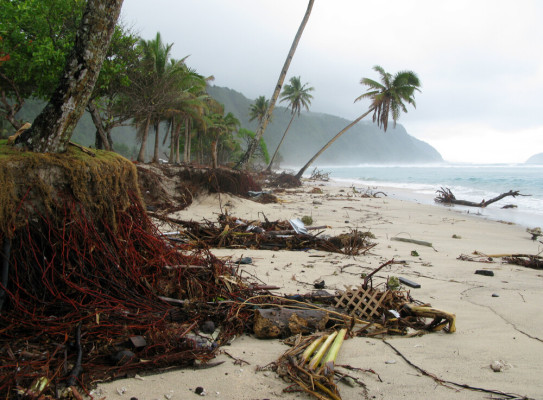So here we are at Turakirae head on the south coast of the north of New Zealand, and here we can see stunning physical evidence of past large earthquakes.
Now I'm standing on a gravel Ridge and amongst these stones we see fossil shells that tell us this red was once down by sea level.
So we can see in these images a whole series of these lines along the coastline of bear rock, and each of these lines represents a raised beach.
The beach that we're standing on right now was actually raised in a massive magnitude 8.2 earthquake on the Wairarapa fault in 1855 ad.
It raised this part of the coastline by six point four meters the horizontal movement was 16 meters along a hundred and twenty kilometer length of fault line. This earthquake also triggered a massive tsunami that was 10 meters high.
So that's one of the largest events we could ever see in New Zealand? No. Because actually right beneath me here is New Zealand's largest fault. About 20 kilometers down as the Hikurangi subduction zone and this marks the boundary where the Pacific plate meets the Australian plate and they crash together.
The Pacific plate is actually being pushed down beneath the Australian plate creating a giant fault surface. These subduction zone boundaries caused the largest earthquakes and tsunamis that we've ever seen around the world. For example in Japan and 2011 also in Sumatra in 2004.
Here in New Zealand this fault extends across the whole of the eastern North Island from Marlborough in the south, to East Cape in the north. Its vital for us to better understand the zone in order to deal with the hazard it poses to us.
The New Zealand government has funded a five-year research program to really delve into some of these questions. We want to investigate how the plates are moving right now and in current times, we want to know the structure of the plate and how they're interacting, we also want to look at past earthquake records like we see here.
Where these earthquakes occurred how big as they've been and what other hazards such as tsunamis and landslides have they triggered.

